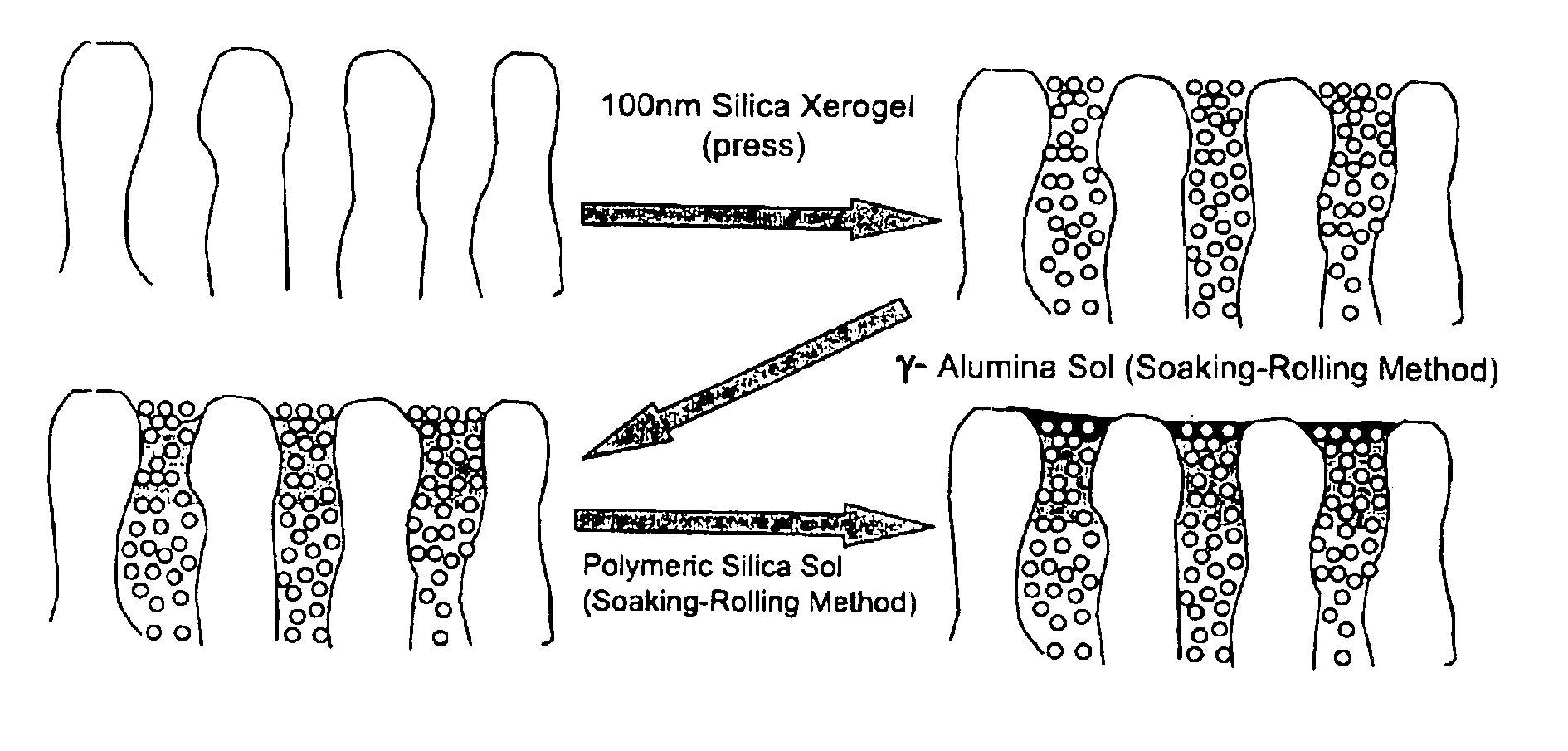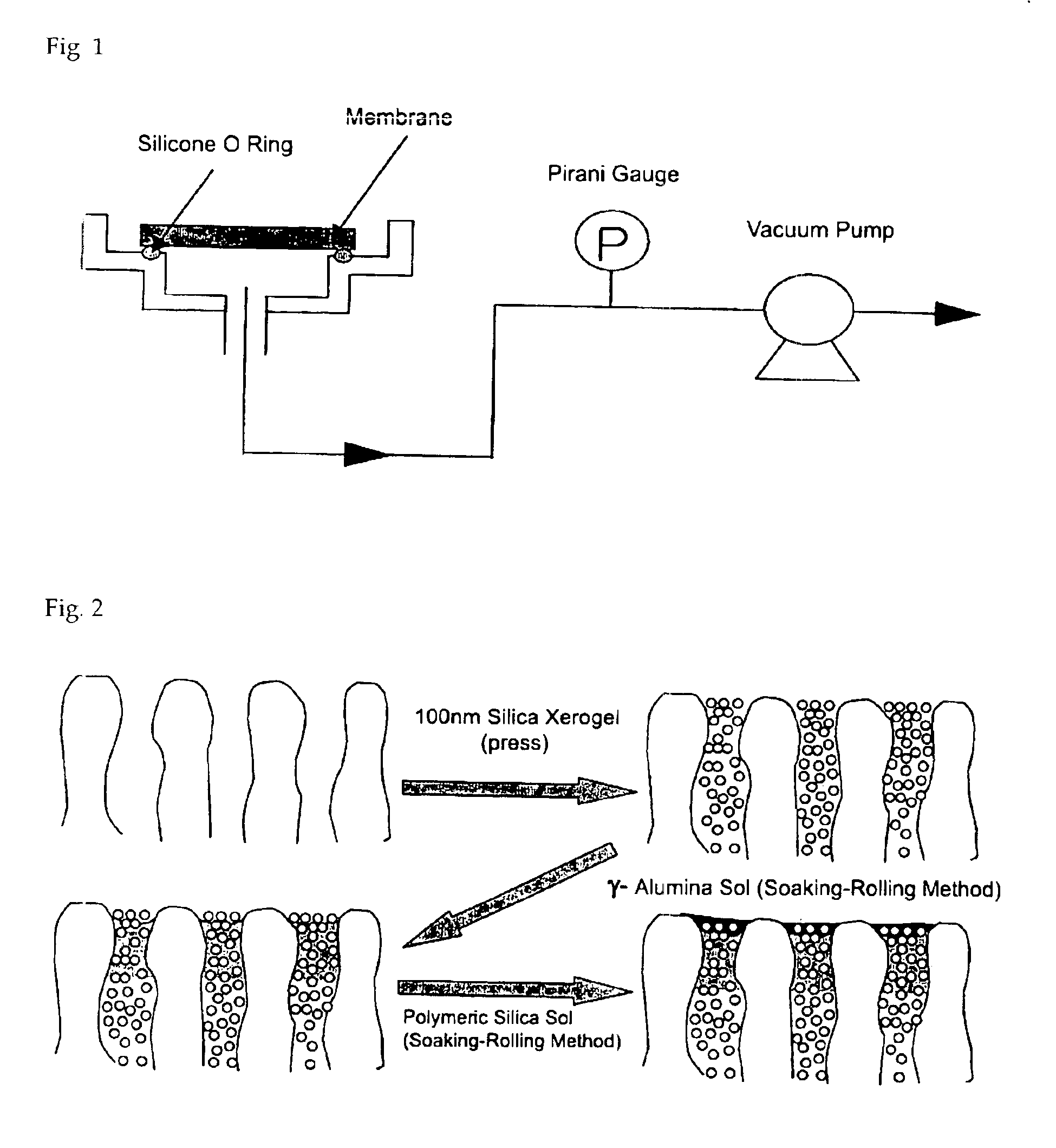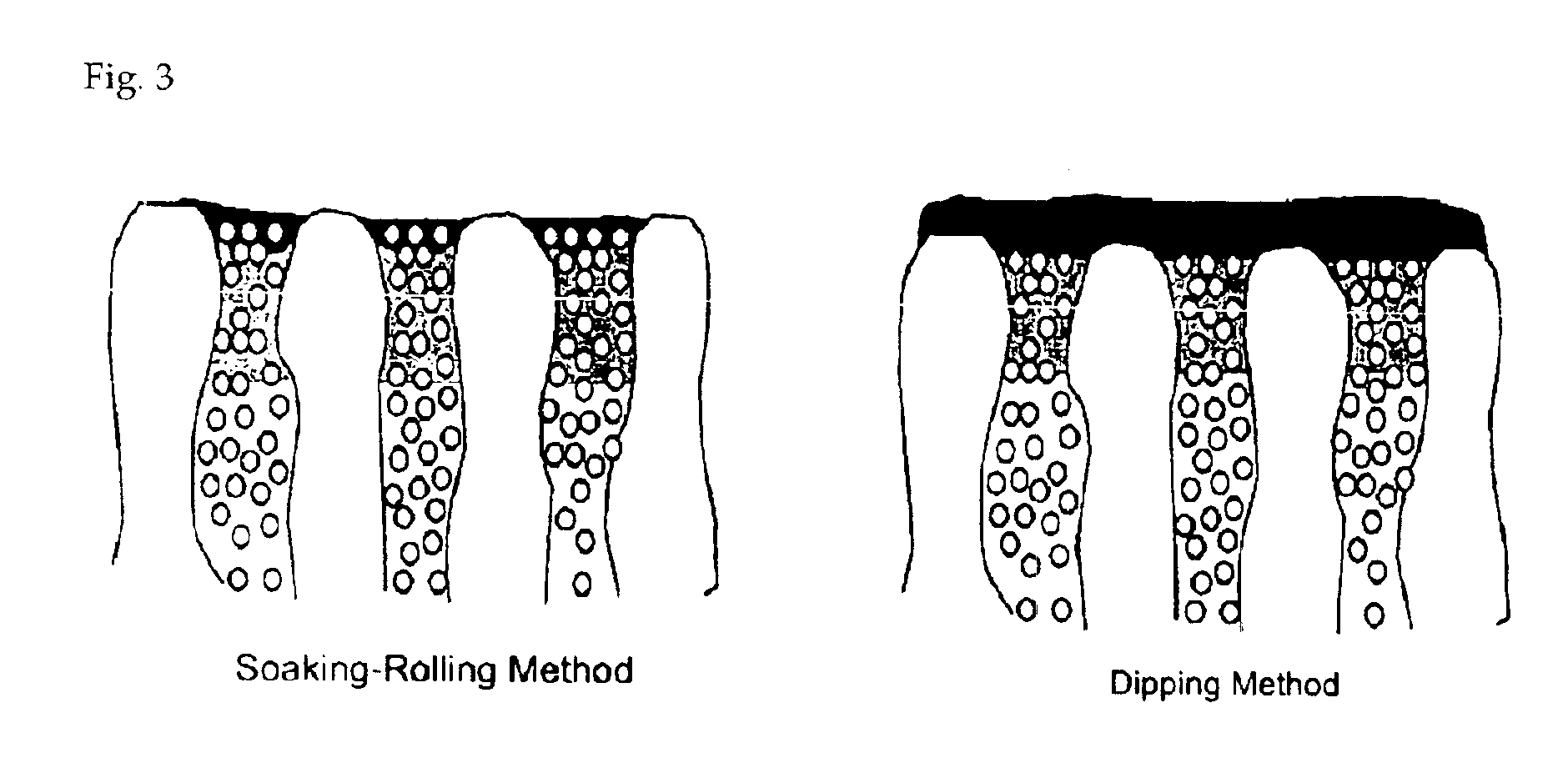Preparation of composite silica membranes with thermal stability by a soaking-rolling method
a composite silica and thermal stability technology, applied in the field of preparing composite silica membranes with thermal stability by soaking-rolling method, can solve the problems of unstable at high temperatures, and poor thermal stability of sol-gel inorganic membranes, and achieve superior thermal stability and thermal stability improvement
- Summary
- Abstract
- Description
- Claims
- Application Information
AI Technical Summary
Benefits of technology
Problems solved by technology
Method used
Image
Examples
example
[0023]Surface modification of a porous support and polymeric silica coating were carried out as in FIG. 2. That is, silica xerogel having a particle size of 80 to 120 nm was applied on a porous stainless steel disc (Mott Metallurgical Co.) support, which is 1 mm thick and has an area of 5 cm2. Then, the support was rolled at 200 atm with a press, and sintered in an electric furnace at 600° C. for 2 hours.
[0024]The surface of the stainless steel support with primary modification was placed under secondary modification with γ-alumina sol by a soaking-rolling method, and dried at 25° C. with relative humidity of 60% for 12 hours, and then sintered at 600° C. for 2 hours. This soaking-rolling, drying, and sintering process was repeated for three times. In the above process, the soaking time was fixed to 3 minutes. The second-modified support was coated with polymeric silica sol, a surface coating material, by soaking-rolling, drying, and sintering for four times. In the above process, t...
experimental example
[0028]Gas penetration test was carried out with the composite silica membranes prepared in Example and Comparative Example.
[0029]Gas penetration test was carried out using a mixture gas of H2 / N2 (99 / 1%) at 28° C., 150° C., 250° C., and 350° C. Argon was used as a sweeping gas of the penetration side, and pressures of both the supply side and the penetration side were set at atmospheric pressure. The penetrating gas was analyzed by gas chromatography (Model GC-14B, Shimatsu), and a thermal conductivity detector (TCD) was used for detection. The column used was Molecular Sieve 5A while argon (Ar) was used as the carrier gas. Temperatures of the column and the detector were 100° C. and 120° C., respectively, and the detector current was 60 mA. Permeance of nitrogen and hydrogen was calculated by the following Equation 1, Fi=QiA Δ PiEquation 1
[0030]wherein Fi is the penetration amount of the component I (mol / s); A is the effective penetration area of the membrane; and ΔPi is the d...
PUM
| Property | Measurement | Unit |
|---|---|---|
| particle size | aaaaa | aaaaa |
| size | aaaaa | aaaaa |
| area | aaaaa | aaaaa |
Abstract
Description
Claims
Application Information
 Login to View More
Login to View More - R&D
- Intellectual Property
- Life Sciences
- Materials
- Tech Scout
- Unparalleled Data Quality
- Higher Quality Content
- 60% Fewer Hallucinations
Browse by: Latest US Patents, China's latest patents, Technical Efficacy Thesaurus, Application Domain, Technology Topic, Popular Technical Reports.
© 2025 PatSnap. All rights reserved.Legal|Privacy policy|Modern Slavery Act Transparency Statement|Sitemap|About US| Contact US: help@patsnap.com



